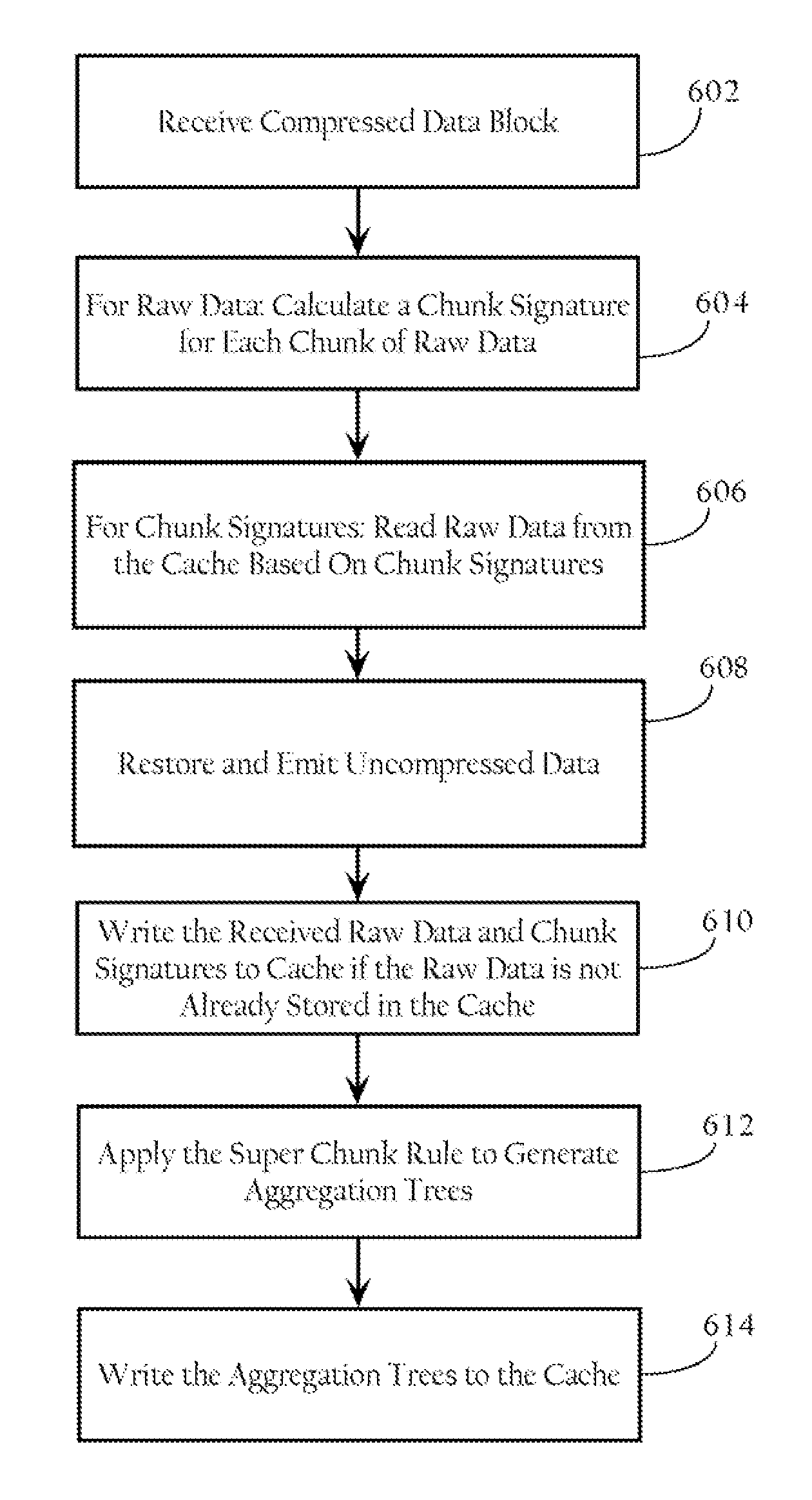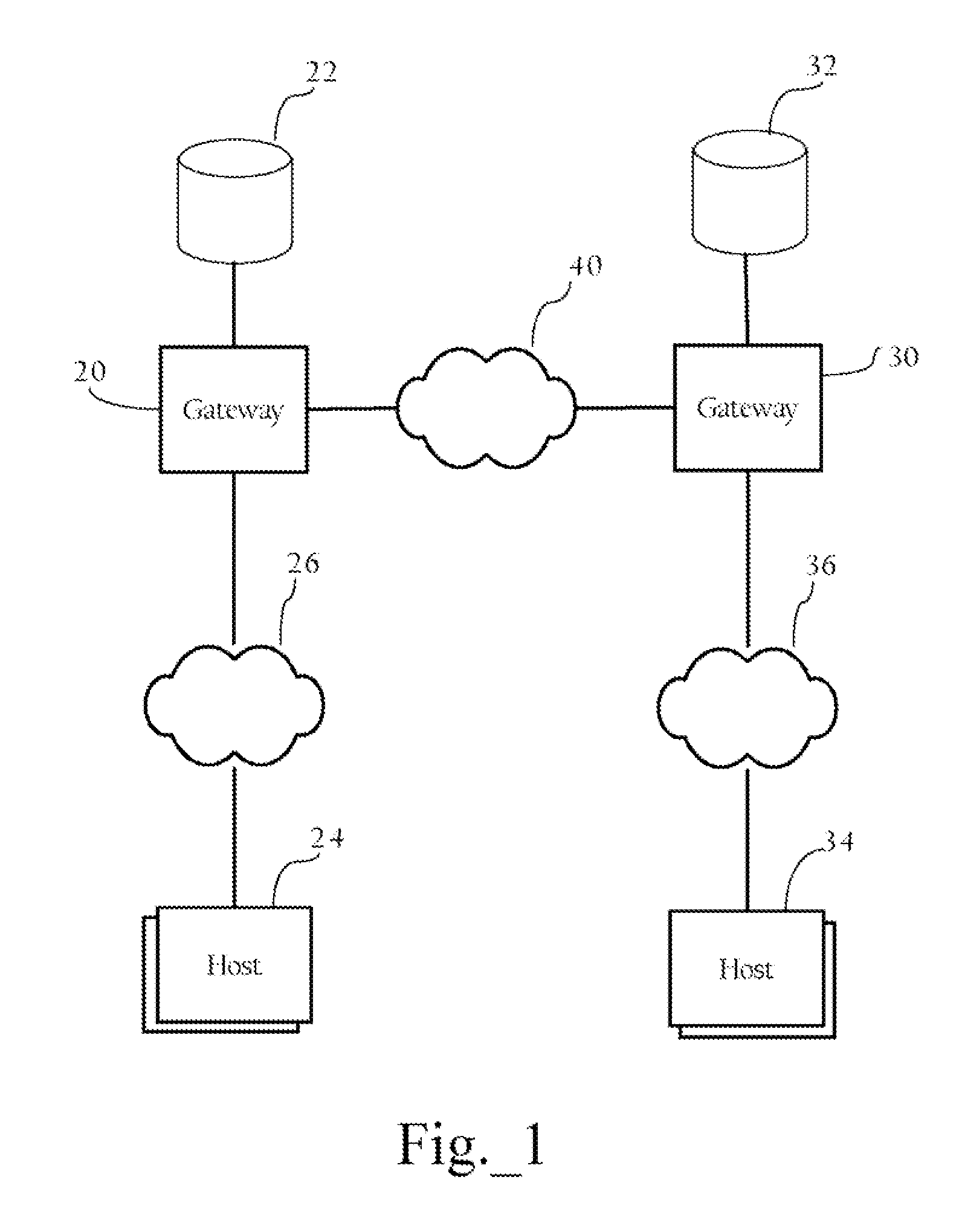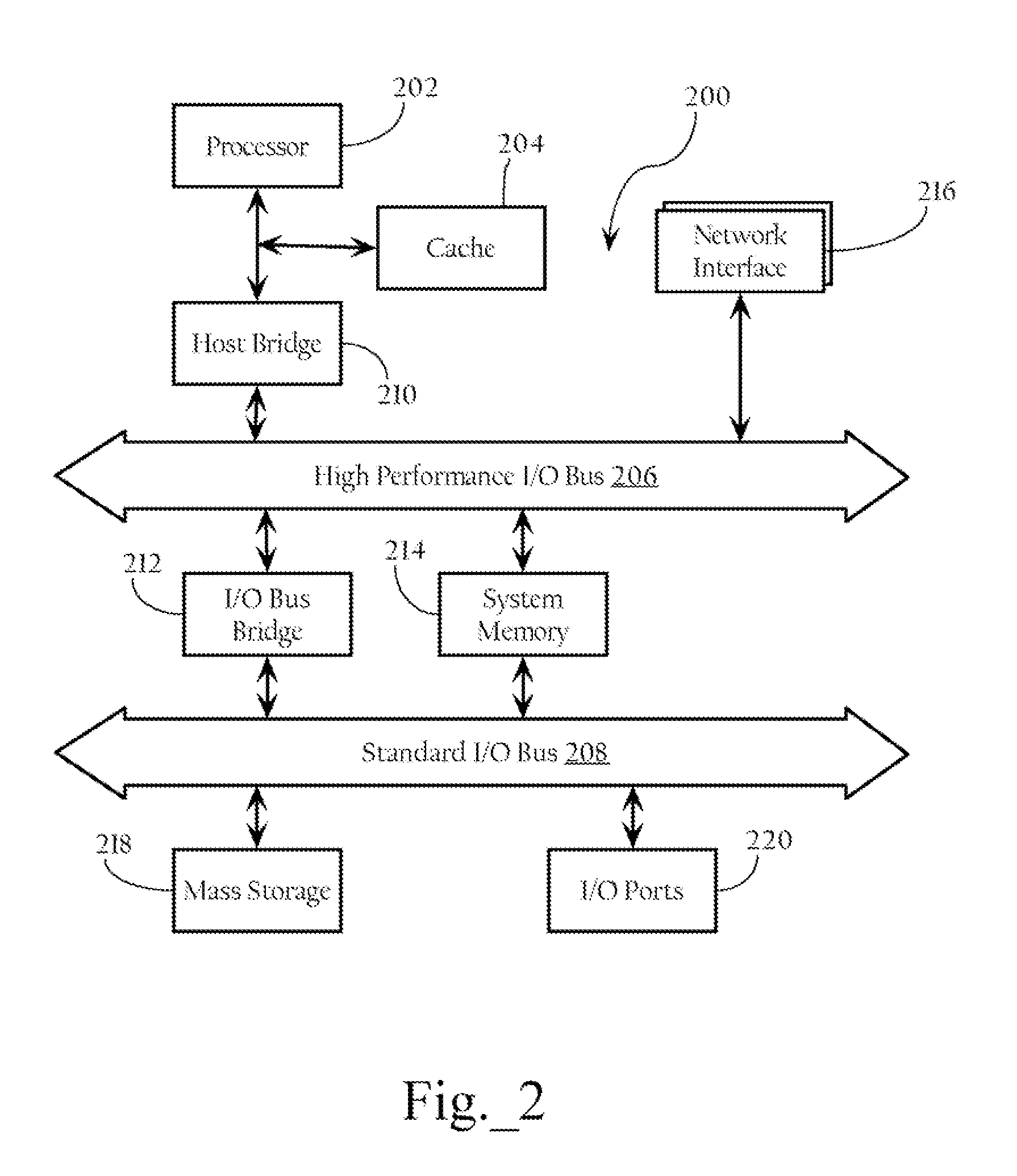Redundancy elimination by aggregation of multiple chunks
a data compression and aggregation technology, applied in the field of data compression systems, can solve the problems of poor compression ratio, less suitable for detecting small-sized redundancies in data streams, and longer chunks
- Summary
- Abstract
- Description
- Claims
- Application Information
AI Technical Summary
Problems solved by technology
Method used
Image
Examples
Embodiment Construction
A. Overview
[0011]Particular embodiments perform data redundancy elimination (DRE) in a manner that increases compression ratios of redundant data transfers while keeping chunk sizes small. According to one implementation, after a compression module receives a data block to be transmitted, a chunking algorithm breaks the data block into base chunks. In one implementation, the compression module applies a super chunk rule to aggregate the base chunks into one or more super chunks. In one implementation, the super chunk rule is operative to aggregate the base chunks into one or more super chunks based on a probabilistic frequency that a given chunk may occur in random data of a data stream. The compression module may then generate chunk signatures for each base chunk and super chunks. In one implementation, the compression module arranges the super chunks and base chunks in a hierarchical aggregation tree to facilitate fast look up operations. Because the chunk signature, may represent...
PUM
 Login to View More
Login to View More Abstract
Description
Claims
Application Information
 Login to View More
Login to View More - R&D
- Intellectual Property
- Life Sciences
- Materials
- Tech Scout
- Unparalleled Data Quality
- Higher Quality Content
- 60% Fewer Hallucinations
Browse by: Latest US Patents, China's latest patents, Technical Efficacy Thesaurus, Application Domain, Technology Topic, Popular Technical Reports.
© 2025 PatSnap. All rights reserved.Legal|Privacy policy|Modern Slavery Act Transparency Statement|Sitemap|About US| Contact US: help@patsnap.com



